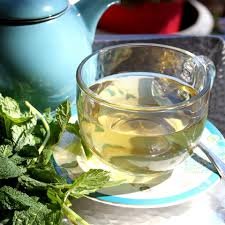Basil is a staple herb in many global cuisines, with each variety offering a unique flavor profile and culinary use. While sweet basil is most familiar to Western kitchens, Thai basil is gaining popularity for its bold, distinctive taste. This article explores the key differences between Thai basil and other types of basil, offers cooking tips, and answers the question: What is a Thai basil?
What is a Thai Basil?
Thai basil is a variety of basil native to Southeast Asia, particularly Thailand, Vietnam, and Laos. It belongs to the Ocimum basilicum species, just like sweet basil, but it has a few distinguishing characteristics. Thai basil is known for its purple stems, small pointed leaves, and a stronger, more licorice-like flavor compared to other basil varieties.
This herb is a cornerstone in many Thai and Vietnamese dishes. Its spicy, slightly sweet aroma and robust taste make it ideal for cooking, particularly in hot and savory recipes like stir-fries, curries, and noodle soups.
Thai Basil vs Sweet Basil
Appearance
Thai basil has narrow, pointed leaves and purple stems. Its flowers are usually pink to purple. In contrast, sweet basil has broader, rounder green leaves with green stems and white flowers.
Flavor
Sweet basil has a mild, slightly peppery flavor with hints of clove. Thai basil offers a stronger taste, often described as spicy with anise or licorice undertones. This boldness allows it to stand up to heat and strong flavors in Southeast Asian cooking.
Culinary Uses
Sweet basil is commonly used in Italian cuisine, such as pesto, caprese salads, and tomato-based sauces. Thai basil, on the other hand, is prominent in Asian dishes like Thai green curry, Vietnamese pho, and drunken noodles. While sweet basil is often added at the end of cooking or used fresh, Thai basil can be cooked into dishes without losing its flavor.
Thai Basil vs Holy Basil
Holy basil, also known as Tulsi, is another variety distinct from Thai basil. It has a peppery, clove-like flavor and is considered sacred in Indian culture.
Key Differences
- Flavor: Holy basil is more pungent and spicy than Thai basil.
- Use: Thai basil is used in culinary applications, while holy basil is commonly used in herbal teas, traditional medicine, and religious rituals.
- Texture: Holy basil leaves are hairier and more brittle, while Thai basil is smoother and more tender.
Thai Basil vs Lemon Basil
Lemon basil is a lesser-known variety with a citrusy twist.
Differences in Flavor and Aroma
Lemon basil has a lemony fragrance and a lighter flavor profile. Thai basil, in contrast, has a strong licorice flavor and pairs well with spicy dishes.
Ideal Uses
Lemon basil works well in seafood dishes, teas, and light salads. Thai basil is better suited to robust dishes with heat and complex seasoning.
Cooking Tips for Thai Basil
1. Add Towards the End of Cooking
Although Thai basil holds up to heat better than sweet basil, it is still best to add it toward the end of cooking. This preserves its vibrant flavor and color.
2. Use Whole Leaves
Thai basil’s leaves are tender enough to be used whole. Pluck them from the stem and toss them into curries, soups, or noodle dishes.
3. Try It Fresh
In dishes like Vietnamese pho or Thai spring rolls, fresh Thai basil is often served as a garnish. This allows diners to tear the leaves and mix them into their food for a burst of flavor.
4. Store Properly
To store Thai basil, trim the stems and place them in a glass of water. Cover the leaves loosely with a plastic bag and keep them at room temperature. Refrigeration can cause the leaves to blacken.
5. Grow Your Own
Thai basil grows well in warm, sunny climates. It can be cultivated in pots or garden beds. Regular trimming encourages bushier growth and more leaves.
Substitutes for Thai Basil
If you can’t find Thai basil, you can substitute it with a mix of sweet basil and a small amount of tarragon or fennel fronds to mimic the anise flavor. While the substitute won’t be exact, it can replicate the essence of Thai basil in many dishes.
Health Benefits of Thai Basil
Beyond its culinary appeal, Thai basil offers several health benefits:
- Rich in antioxidants: Thai basil contains compounds like orientin and eugenol that help combat oxidative stress.
- Anti-inflammatory properties: These can aid in reducing inflammation in the body.
- Digestive support: Thai basil may help with indigestion and bloating.
- Antibacterial properties: It can help fight certain strains of bacteria.
Incorporating Thai basil into your diet not only enhances flavor but also contributes to overall wellness.
Common Dishes Featuring Thai Basil
Here are some classic dishes where Thai basil is a star ingredient:
- Pad Krapow (Thai Basil Chicken): A spicy stir-fry with ground chicken, garlic, chilies, and Thai basil.
- Green Curry: A coconut-based curry enriched with Thai basil leaves.
- Pho: A Vietnamese noodle soup often garnished with fresh Thai basil.
- Drunken Noodles (Pad Kee Mao): Stir-fried wide noodles with meat, vegetables, chili, and Thai basil.
Conclusion
What is a Thai basil It’s more than just a herb—it’s a flavorful, aromatic staple that transforms a dish from simple to extraordinary. With its licorice-like flavor, beautiful purple stems, and resilience to heat, Thai basil stands out among the many basil varieties. Whether you’re exploring Thai cuisine or simply looking to spice up your meals, understanding the differences between Thai basil and other basils can elevate your cooking. Add it to your kitchen and discover a world of bold, fresh flavors.



